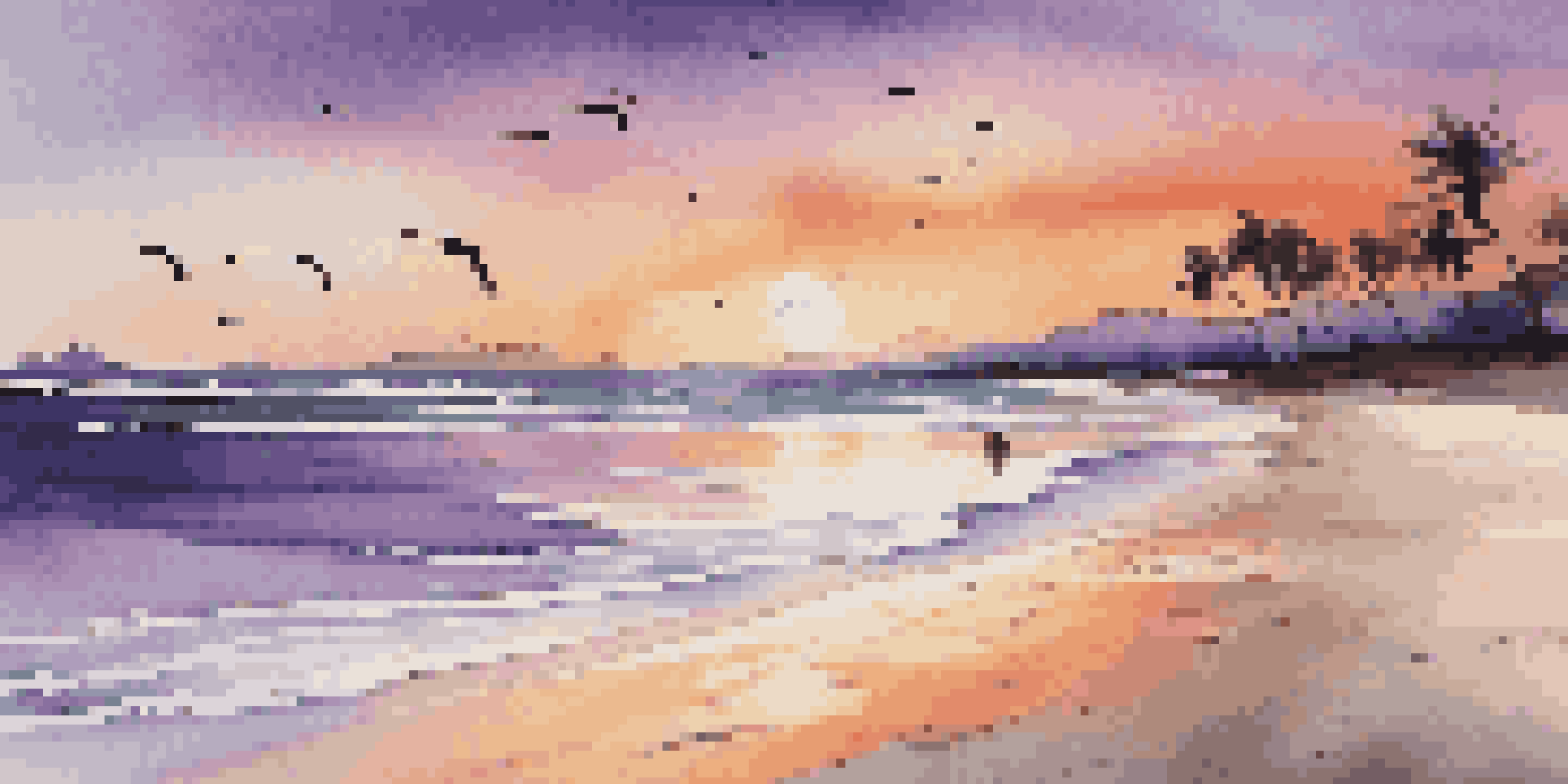How to Edit and Polish Your Travel Writing

Understanding the Importance of Editing in Travel Writing
Editing is a crucial step in travel writing that can elevate your work from good to great. It's not just about correcting grammar and spelling; it's about refining your voice and ensuring clarity. When you take the time to edit, you’re giving your readers a polished experience that resonates with them.
Writing is rewriting.
Think of editing as sculpting a block of marble. Initially, it might not look like much, but with careful chiseling, a beautiful statue emerges. Similarly, your travel stories can shine once you remove the unnecessary details and sharpen your narrative.
By investing effort into editing, you not only enhance your credibility as a writer but also increase the likelihood of engaging your audience. Readers are often drawn to well-crafted pieces that tell a vivid story, ensuring they remember your adventures long after they finish reading.
The First Step: Take a Break After Writing
After you’ve finished your initial draft, step away for a short period. This break allows you to return to your work with fresh eyes, making it easier to spot inconsistencies and errors. It’s like letting a cake cool before icing it; trying to edit immediately can lead to hasty mistakes.

During this time, engage in other activities, like taking a walk or reading a book. Doing something different can help clear your mind and prepare you for a more objective review of your writing. When you return, you might be surprised at what stands out.
Editing Elevates Travel Writing
Meticulous editing transforms your travel stories by refining your voice and enhancing clarity.
By giving yourself this mental pause, you’re more likely to identify areas that need improvement, whether it’s awkward phrases or sections that lack flow. This initial distance is a powerful tool in the editing process.
Read Aloud to Catch Mistakes and Improve Flow
One effective editing technique is to read your work aloud. Hearing your words can help you catch awkward phrasing and identify parts that may confuse readers. If something doesn’t sound right, it probably needs reworking.
The first draft is just you telling yourself the story.
When you read aloud, you’re also able to evaluate the rhythm of your writing. A well-paced narrative will keep readers engaged, while a choppy or monotonous flow can easily lose their interest. This auditory feedback is invaluable.
Additionally, if you stumble over a sentence while reading, it’s a sign that it may need restructuring. This practice not only helps with spotting errors but also enhances the overall readability of your travel writing.
Focus on Structure: Organize Your Content Logically
A clear structure is essential in travel writing, guiding readers through your experiences seamlessly. Start with a compelling introduction that sets the scene, followed by the body where you share your adventures, and end with a reflective conclusion. This organization helps maintain clarity.
Consider using headings and subheadings to break up your text, making it easier for readers to follow along. Just like a well-planned itinerary, a structured narrative helps your audience know what to expect and keeps them engaged.
Structure Guides Reader Experience
A logical structure in your writing, with clear introductions and conclusions, keeps readers engaged and informed.
Also, don’t hesitate to rearrange paragraphs if necessary. Sometimes, the order of your content can greatly impact the flow and coherence of your story, enhancing the overall reading experience.
Use Descriptive Language to Evoke Imagery
Travel writing is all about painting vivid pictures with words. Use descriptive language that appeals to the senses, allowing readers to feel as though they are right there with you. Instead of saying 'the beach was nice,' describe the golden sand, the sound of crashing waves, and the scent of salty air.
Metaphors and similes can also be powerful allies in your writing. For instance, comparing a bustling market to a 'living tapestry of colors and sounds' instantly adds depth to your narrative. Engaging descriptions create a more immersive experience for your audience.
However, balance is key. While it’s essential to provide rich details, avoid overloading your readers with excessive descriptions. Aim for a blend that maintains clarity while still evoking strong imagery.
Seek Feedback from Trusted Readers
Sharing your work with others can provide valuable insights that you might have missed. Trusted friends or fellow writers can offer constructive criticism and highlight areas that need attention. They can point out confusing sections or suggest improvements that enhance your narrative.
When seeking feedback, choose individuals who understand your writing style and the essence of travel writing. Their perspectives can help you refine your voice and ensure your story resonates with a broader audience.
Descriptive Language Engages Senses
Using vivid, sensory language helps create immersive experiences for readers, making them feel part of your journey.
Remember to approach feedback with an open mind. Not every suggestion needs to be incorporated, but constructive criticism can illuminate blind spots and help you polish your work.
Final Touches: Proofreading for Errors
The final step in the editing process is proofreading. This is where you focus on spelling, grammar, and punctuation errors. Even the most engaging travel stories can lose their impact if littered with mistakes, so take this stage seriously.
Use tools like spell check, but don’t rely solely on them. Reading your work line by line can help you catch errors that automated tools might miss, such as homophones or context-specific mistakes. It’s akin to checking your luggage before a trip; you want to ensure everything is in order.

Consider printing out your piece or changing the font to help spot errors more easily. This fresh perspective can make all the difference, ensuring your travel writing is polished and professional before sharing it with the world.